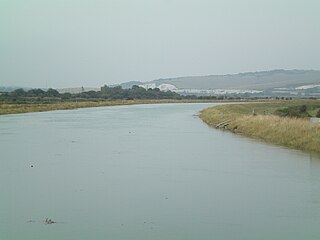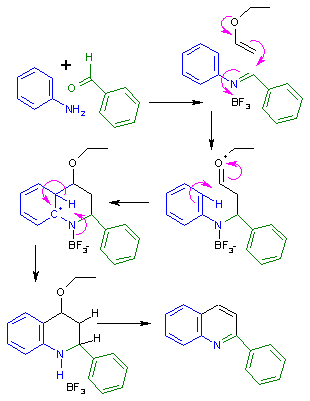AB-PINACA
AB-PINACA | |
| 법적 상태 | |
|---|---|
| 법적 상태 | |
| 식별자 | |
| |
| CAS 번호 | |
| PubChem CID | |
| 켐스파이더 | |
| 유니 | |
| CompTox 대시보드 (EPA ) | |
| 화학 및 물리 데이터 | |
| 공식 | C18H26N4O2 |
| 몰 질량 | 330.432g/표준−1 |
| 3D 모델(JSmol) | |
| |
| |
AB-PINACA는 2012년 [1]일본에서 합성 대마초 제품의 성분으로 처음 확인된 화합물이다.
2009년 화이자에서 진통제로 [2][3]처음 개발되었습니다.
AB-PINACA는 랫드 판별 연구에서 CB 수용체1(Ki = 250.87nM, EC2 = 1.2nM)와i CB 수용체(K = 050.88nM, EC = 2.5nM)의 잠재적 작용제로서 작용하며, [4][5]δ-THC의9 완전한 대체제로서 1.5배 더 강력하다.
이 합성 칸나비노이드와 [6]관련하여 사망 및 입원 사례가 다수 보고되었다.
법적 상태
독일.
AB-PINACA는 2014년 [7]11월 현재 독일의 Anlage II 제어 물질이다.
싱가포르
2015년 [8]5월 현재 싱가포르에서는 마약남용법 제5부칙에 등재되어 있어 불법이다.
미국
중국
2015년 [10]10월 현재 중국에서 관리되고 있는 물질입니다.
프랑스.
2017년 [11]3월 현재 프랑스에서 통제되고 있는 물질입니다.
「 」를 참조해 주세요.
레퍼런스
- ^ Uchiyama N, Matsuda S, Wakana D, Kikura-Hanajiri R, Goda Y (2012). "New cannabimimetic indazole derivatives, N-(1-amino-3-methyl-1-oxobutan-2-yl)-1-pentyl-1H-indazole-3-carboxamide (AB-PINACA) and N-(1-amino-3-methyl-1-oxobutan-2-yl)-1-(4-fluorobenzyl)-1H-indazole-3-carboxamide (AB-FUBINACA) identified as designer drugs in illegal products". Forensic Toxicology. 31: 93–100. doi:10.1007/s11419-012-0171-4. S2CID 25242453.
- ^ "AB-PINACA". Cayman Chemical. Retrieved 25 June 2015.
- ^ "Patent WO/2009/106980 - Indazole derivatives".
{{cite journal}}:Cite 저널 요구 사항journal=(도움말) - ^ Banister SD, Moir M, Stuart J, Kevin RC, Wood KE, Longworth M, et al. (September 2015). "Pharmacology of Indole and Indazole Synthetic Cannabinoid Designer Drugs AB-FUBINACA, ADB-FUBINACA, AB-PINACA, ADB-PINACA, 5F-AB-PINACA, 5F-ADB-PINACA, ADBICA, and 5F-ADBICA". ACS Chemical Neuroscience. 6 (9): 1546–59. doi:10.1021/acschemneuro.5b00112. PMID 26134475.
- ^ Wiley JL, Marusich JA, Lefever TW, Antonazzo KR, Wallgren MT, Cortes RA, et al. (September 2015). "AB-CHMINACA, AB-PINACA, and FUBIMINA: Affinity and Potency of Novel Synthetic Cannabinoids in Producing Δ9-Tetrahydrocannabinol-Like Effects in Mice". The Journal of Pharmacology and Experimental Therapeutics. 354 (3): 328–39. doi:10.1124/jpet.115.225326. PMC 4538877. PMID 26105953.
- ^ Trecki J, Gerona RR, Schwartz MD (July 2015). "Synthetic Cannabinoid-Related Illnesses and Deaths". The New England Journal of Medicine. 373 (2): 103–7. doi:10.1056/NEJMp1505328. PMID 26154784.
- ^ "Gesetz über den Verkehr mit Betäubungsmitteln (Betäubungsmittelgesetz - BtMG) Anlage II (zu § 1 Abs. 1) (verkehrsfähige, aber nicht verschreibungsfähige Betäubungsmittel)". Retrieved 22 June 2015.
- ^ "CNB NEWS RELEASE". Central Narcotics Bureau (CNB). 30 April 2015. Archived from the original on 15 July 2015. Retrieved 24 July 2015.
- ^ "Schedules of controlled substances: Temporary placement of three synthetic cannabinoids into schedule I. Final order" (PDF). Drug Enforcement Administration, Department of Justice. 30 January 2015. Retrieved 9 July 2015.
- ^ "关于印发《非药用类麻醉药品和精神药品列管办法》的通知" (in Chinese). China Food and Drug Administration. 27 September 2015. Archived from the original on 1 October 2015. Retrieved 1 October 2015.
- ^ "Arrêté du 31 mars 2017 modifiant l'arrêté du 22 février 1990 fixant la liste des substances classées comme stupéfiants" (in French). Legifrance. 6 April 2017. Retrieved 6 April 2017.


